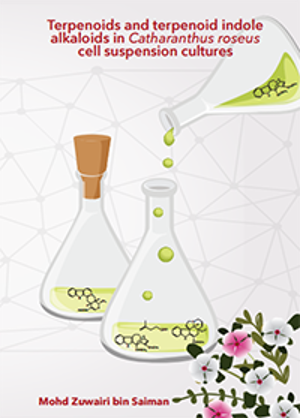Dissertation
Terpenoids and terpenoid indole alkaloids in Catharanthus roseus cell suspension cultures
Promotor: Prof.dr. R. Verpoorte, Co-Promotores: N.R. Mustafa, A.E. Schulte
- Author
- M.Z. Bin Saiman
- Date
- 20 November 2014
- Links
- Thesis in Leiden Repository

The research described in this thesis was aimed at analyzing the regulation of the channeling of carbon into different terpenoid pathways including the terpenoid indole alkaloids (TIA) and their iridoid precursors in Catharanthus roseus cell suspension cultures. Of the different terpenoid classes; monoterpenoid (C10; TIA), triterpenoid (C30; sterol), and tetraterpenoid (C40; carotenoid), the latter was the largest pool. The production of carotenoids and TIA through the methyl-erythritol phosphate (MEP) pathway was increased after jasmonic acid elicitation, while the sterols from the mevalonate (MVA) pathway were not increased. Mevalonate feeding only increased the sterols. The effect of geraniol feeding alone and in combination with jasmonic acid elicitation resulted in increased levels of loganic acid and strictosidine, respectively. Catharanthus roseus cell suspension cultures overexpressing geraniol synthase in the plastid or cytosol were successfully developed and metabolic analysis by NMR-based metabolomics showed different metabolic effects related to the subcellular compartmentation of geraniol synthase. In conclusion, reallocation of C5 units between MEP and MVA pathway seems difficult, but both have different regulation which could be further studied to increase alkaloid production.
